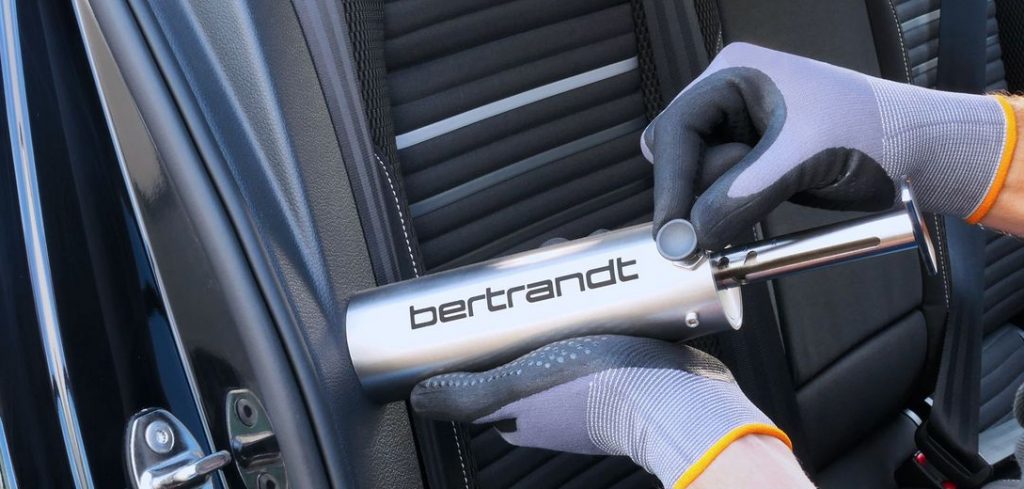Testing service supplier Bertrandt says it has developed a standardized and validated testing system, incorporating mobile ball impact testing device, which enables customers to carry out independent testing of interior components.
The company notes that a trend toward lightweight vehicle construction is leading to the increased use of hybrid plastic technologies in the development of interior components. These require thorough testing and functional validation in a real vehicle environment.
The ball impact test is used to test a component’s impact resistance. In conventional tests, a steel ball with a defined mass is dropped from a set height through a drop pipe onto a horizontal surface of the component being tested. In practice, however, some components are installed vertically or diagonally and it is therefore not possible to test them directly in the vehicle using a free-falling ball.
Bertrandt has circumvented this problem by creating a mobile ball tester that is not constrained by the orientation of the component under test.
The company says that, unlike conventional ball test systems, the energy required to cause an impact with the component is not generated by a free-falling ball. Instead, kinetic energy is stored in a spring that is pre-loaded and locked to the required level. When the locking mechanism is released, the ball is accelerated toward the component and transfers its kinetic energy on impact with the surface.
“We have been carrying out ball impact tests in our interior testing department for more than 20 years and we also provide support for our customers in the further development of testing standards,” said Maik Winningstedt, team leader of interior testing at Bertrandt. “This comprehensive expertise enabled us to develop a valid testing system, our Ball Impact Device. Our mission is to offer our customers a standardized, calibrated testing device that enables them to perform independent tests in compliance with testing regulations.”
The test ball, which is made of corrosion-resistant stainless steel, has a diameter of 50mm and the ball impact device weighs 1.7kg in total. It features five locking levels, corresponding to a simulated drop height of 300-700mm and can be used across a wide temperature range down to -45°C.


